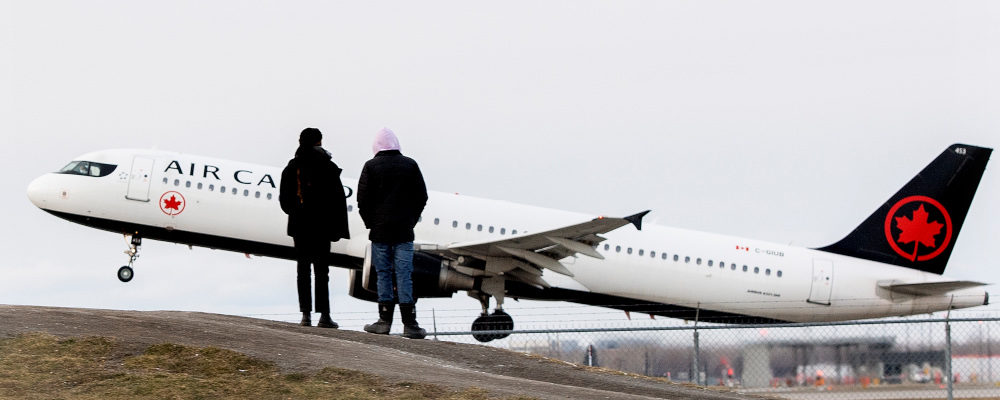The COVID-19 pandemic has affected every part of the Canadian economy, but few sectors have been as impacted as those related to tourism. Restaurants are in limbo, theatres are shuttered, museums are operating on reduced hours, and international air travel is, for most, grounded. The net effect is that 87 percent fewer tourists visited Canada in 2020 than the previous year.
The federal government has responded with various emergency stopgap measures including direct support to the airlines. But as important as these temporary measures may be, they don’t begin to address the long-term challenges facing the Canadian air travel industry which existed prior to the pandemic and, of course, have been exacerbated by it.
Consider this: according to Deloitte, while Canada was the world’s second most popular travel destination in 1970, it had fallen to eighteenth by 2011. Even before the pandemic, in other words, Canadian tourism was on a secular decline.
Considering all that Canada has to offer, from world-class cities to internationally recognized national parks, it’s a bit perplexing that we’ve experienced this relative drop in tourism. The answer, at least partially, is a relatively unknown bureaucratic nightmare: the National Airports System (NAS).
The NAS is comprised of 26 airports in Canada which handle virtually all of the nation’s air cargo and international passenger traffic, and 95 percent of domestic passenger traffic. These airports, which are designated by Transport Canada as “essential to Canada’s air transportation system,” include Vancouver Airport, Toronto Pearson Airport, and Montréal-Pierre Elliott Trudeau Airport. These aren’t, in other words, small potatoes operations; if you’ve flown commercially in Canada, you’ve flown through a NAS airport.
The operational structure of these airports is unique: the federal government retains ownership of NAS airports through Transport Canada, while the operational, managerial, and developmental responsibilities are managed by Canadian Airport Authorities (CAAs). Airport authorities are not-for-profit corporations governed by a board of directors which include several government representatives, an organized labour representative, and a representative for consumer interests. If you’ve flown through Toronto Pearson Airport, for instance, you may have seen information provided by the Greater Toronto Airports Authority, the CAA which operates Toronto Pearson.
CAAs, by law, must operate self-sufficiently without federal government subsidies by levying fees on travelers and carriers to pay for airport expenses. But that’s not all. They’re also required to provide rental income to the Canadian federal government. As a 2000 Auditor General’s report explains: “as owner/landlord of transferred airports in the National Airports System, the government is entitled to receive rent from each airport authority for the use of land and airport facilities.”
These rent payments, which are passed onto the consumer via ticket pricing, can represent more than 10 percent of airport revenues. The Canadian Airports Council, an advocacy group supported by airport authorities, notes that airports provided “$368 million in federal rent [in 2017 alone]—and more than $5.6 billion transferred back to the federal government since 1992.”
But calling these payments “rents” is a bit of a misnomer. The federal government does not provide any additional services or material improvements in exchange for receiving these rents. Much like a slumlord, Transport Canada enriches itself without improving its rental properties.
So, how does this system impact consumers? The short answer is in the form of higher ticket prices. In 2015, Canada was ranked 130th out of 138 countries in terms of ticket taxes and charges imposed on airports. But the longer answer is in the form of the opportunity costs of passengers who choose to travel elsewhere as a result of these higher travel costs.
While it’s necessarily difficult to measure, the number of Canadians flying out of American airports instead of nearby Canadian airports for international travel is a possible proxy. Buffalo Niagara Airport has a Canadian Info section on its front page, while Plattsburgh Airport proudly advertises itself as Montreal’s U.S. airport. That these airports see Canada’s high travel costs as a market opportunity is ostensibly a sign that there’s a need for change.
As Canada aims to recover from the COVID-19 pandemic, seeking to stimulate economic growth in the restaurant, tourism, and entertainment industries, the federal government should consider eliminating NAS airport rents.
The one major obstacle to reform is the intersection between politics and fiscal policy. Although the federal government generates considerable revenue from these rents, air travel customers only pay modest fees. These small fees are in essence a hidden tax levied on consumers who travel by air. It’s a classic case of concentrated benefits and dispersed costs.
But just because these costs may be small in relative terms, it doesn’t mean that they don’t have individual or collective consequences. Considering that a frequent vacationer travelling to an expensive getaway at an all-inclusive resort and a first-time traveller who has saved up to visit family overseas are subject to the same fees, this hidden tax is, by definition, regressive. Travellers pay a smaller proportion of their income on rent fees as their incomes increase.
Notwithstanding this political economy issue, there may be reason to be optimistic about the potential for reform. The federal government has deferred and waived rent payments from NAS airports in response to the pandemic, and in the most recent Transport Canada Fees Report, the Transport Minister Omar Alghabra writes that “as we continue to review fees, we are considering the economic impacts of the global pandemic and the recovery of the transportation sector.” Perhaps, then, the pandemic may be an impetus to revisit this long-standing policy.
There are also clear impacts beyond tourism. A study by Deloitte from 2013 estimated that a “1 percent increase in international arrivals to Canada… results in total Canadian exports rising by $817 million.” Businesses are more likely to import products from countries that their personnel have visited. Increasing the number of international travelers to Canada increases demand for Canadian products, services, and talent around the world. Lower air travel costs will also incentivize Canadian travelers to use Canadian airports instead of nearby American airports, thereby increasing federal tax revenue.
Cultural industries benefit as well. Tourists visiting Canada go to museums, attend art shows, watch concerts, drink craft beer, and purchase Canadian artisanal products to bring home as souvenirs. Increasing the number of international tourists will necessarily increase the number of cultural customers in the country.
When travel opens up again and we seek to “regain altitude”, one step that Ottawa can take to boost the economy in the short- and long-run is by permanently waiving National Airports System rents.




